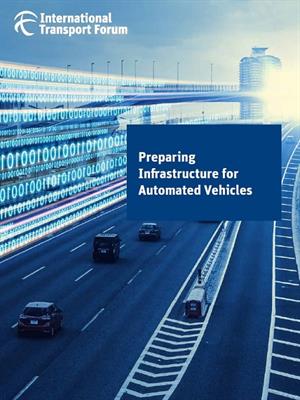The International Transport Forum (ITF) in the UK has recently published a report examining what is needed now to support automated vehicles, focussing on three policy-making areas: physical infrastructure, data and digital infrastructure, and institutional frameworks.
It draws on the deliberations of an ITF Working Group, as well as interviews with policy makers, developers and experts.
of an ITF Working Group, as well as interviews with policy makers, developers and experts.
The Executive Summary of the report says that many of those responsible for developing and managing the transport system remain enthusiastic about the potential for automation to make journeys better, save lives and streamline the management of the road network.
Automated vehicles (AVs) are becoming more prevalent and more capable, and are likely to become more widespread in the decades ahead. However, AVs represent a significant departure for road transport. Until now, all vehicles have been under the control of a human driver. This means that expectations about perception, safety requirements and legal compliance are all designed around human needs and limitations. AVs may have substantially different requirements and implications for the operation of road infrastructure. This, in turn, may require updating understanding of what infrastructure must deliver to serve the needs of its users.
Any difference could have significant implications. The operation of AVs to date has largely been within the context of testing and piloting initiatives. Developers and their sponsors have limited AVs’ operation to particular geographical areas with well-defined types of roads and fairly predictable environments. This has helped ensure that trials lead to the repeated experience that enables the learning and continual improvements essential to the ability to unlock the benefits of automation.
Yet it has also limited the area where developers are confident offering automated services, limiting their real-world spread. While current AV implementations are designed to operate safely within the current infrastructure designs and ecosystem, there are also important questions about what kinds of infrastructure may enhance safety critical functions once AVs are present on more of the road network. These questions are made more complex by the way in which AVs are part of a connected and intelligent system of systems, whose architecture has not yet fully emerged. In the face of such changes, maintaining coherent oversight of the safety of the road network becomes more complex.
To explore these questions, and to examine the potential for immediate action to address the clearest needs, the report examines what kinds of support are most in demand from three policy-making areas: physical infrastructure, data and digital infrastructure, and institutional frameworks. While many studies have sought to understand how the long-term future of transport may be shaped by new technology, the report focusses on immediate obstacles to deployment and the extent to which governments can address them through specific actions.
The full report is available here.